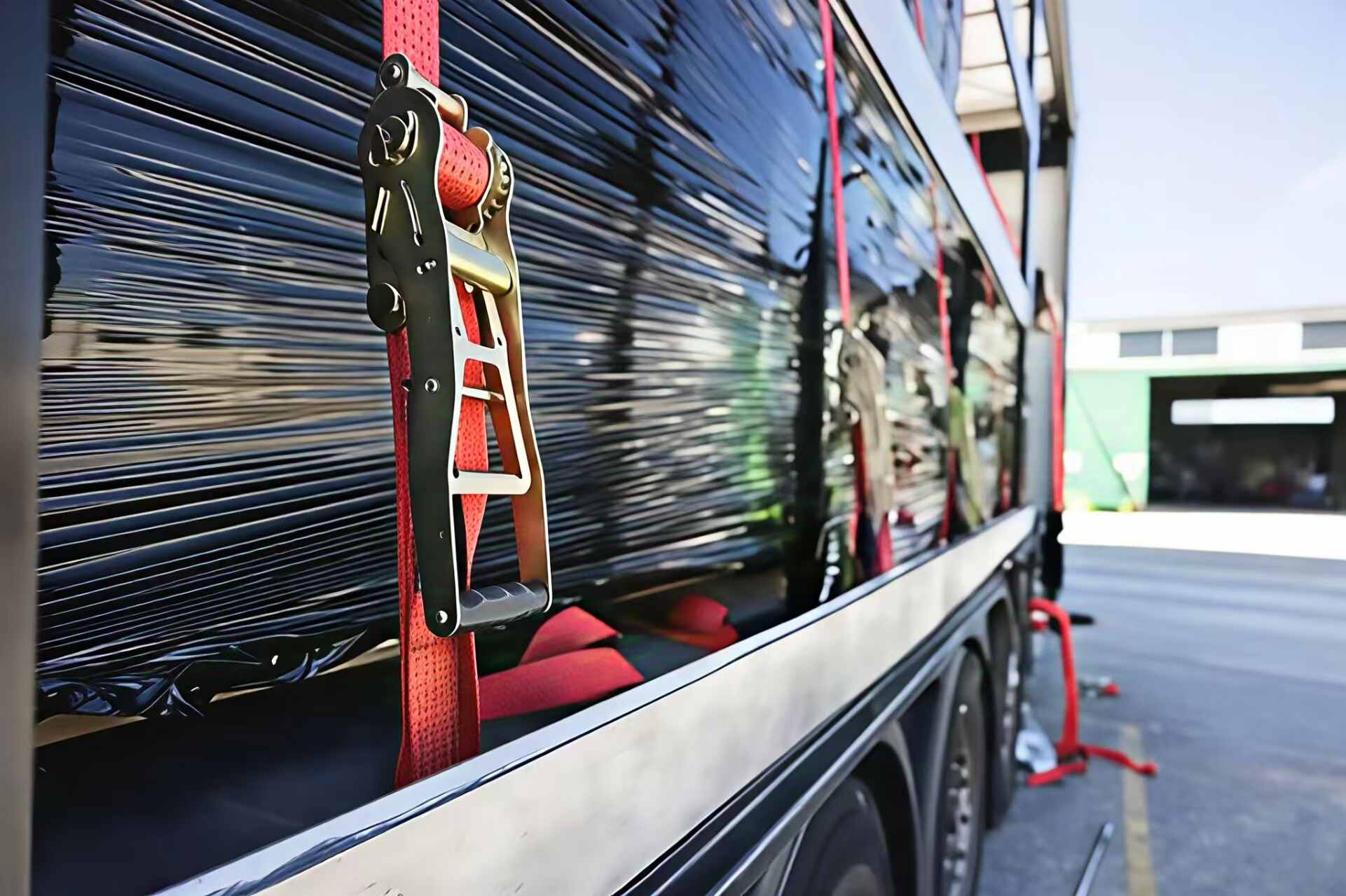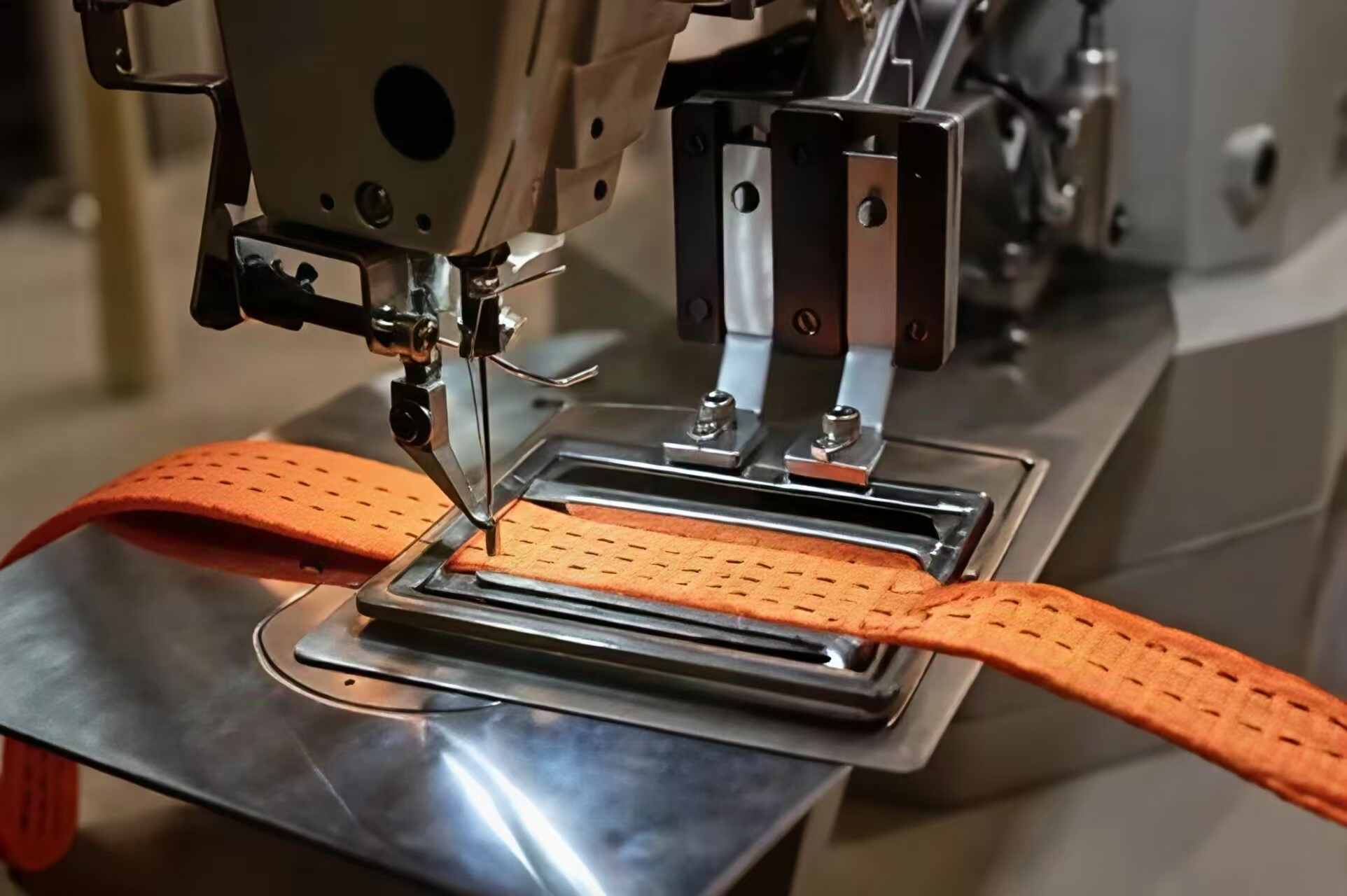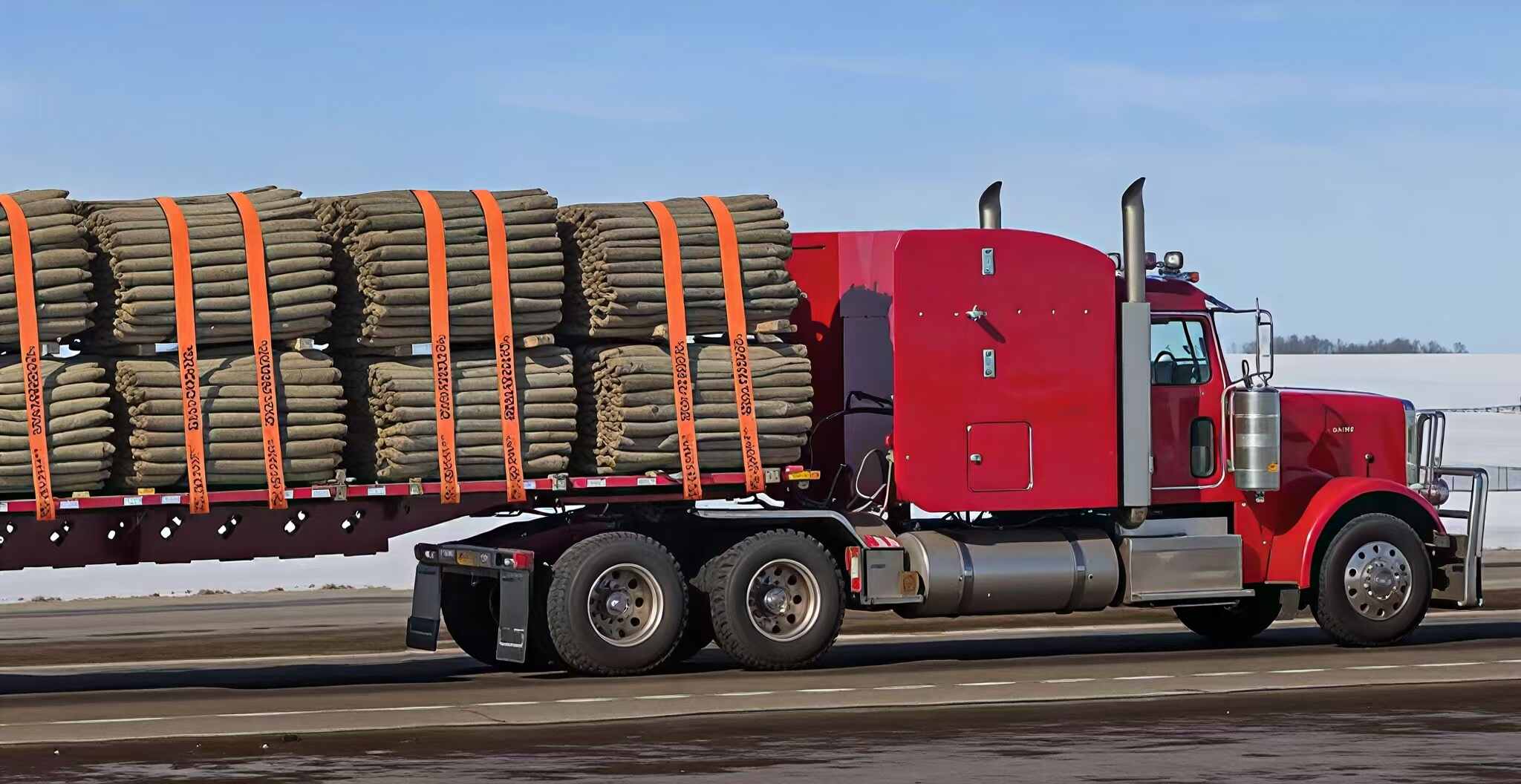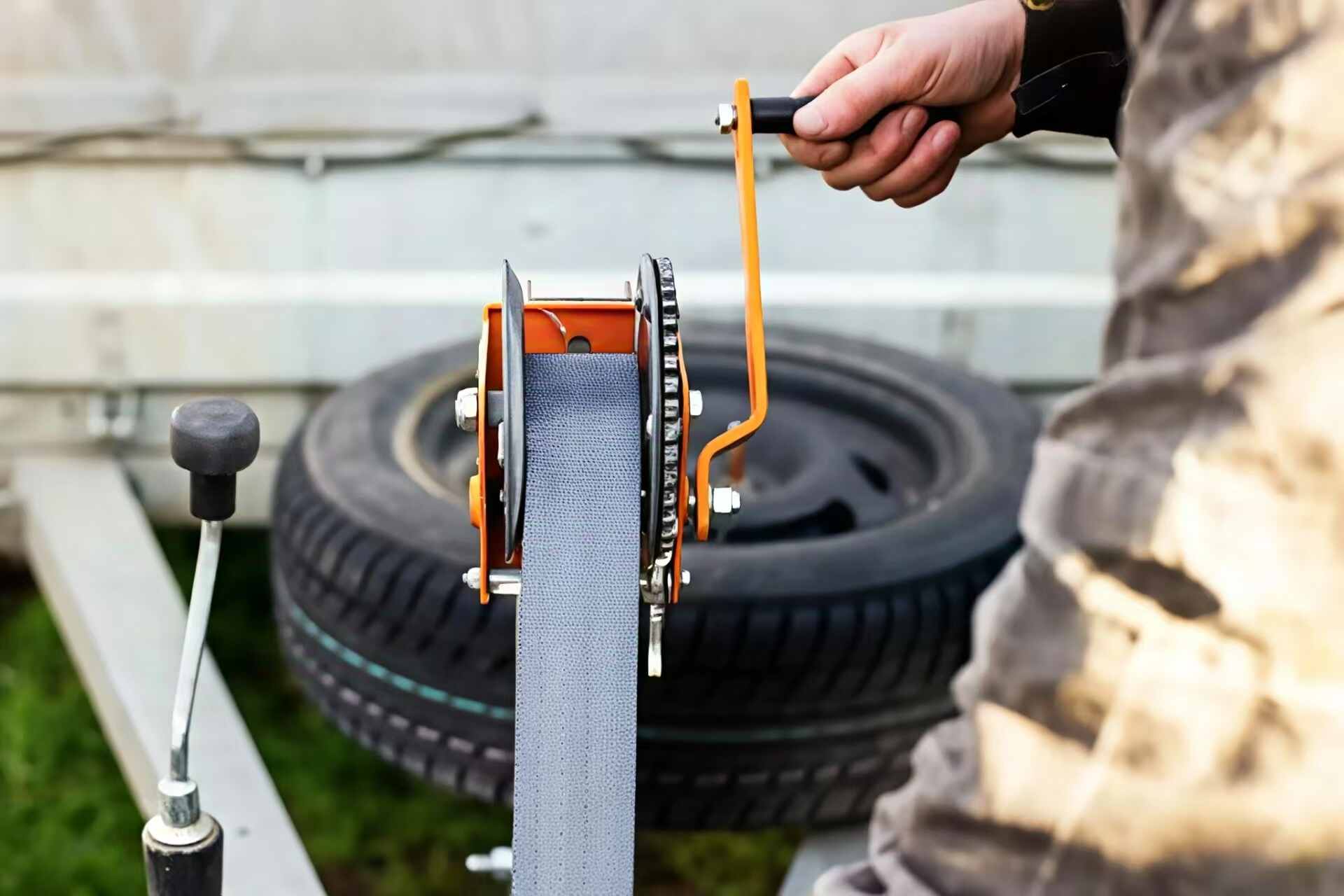Date: April 24, 2025
By: Joe , Lead Engineer at Force, Your Factory-Direct Partner for Industrial Tie Down Solutions
NINGBO, China — At Force Rigging, we often hear from our customers: “What’s the difference between ratchet straps and winch straps, and which one’s better for my loads?” As manufacturers with over 15 years of experience crafting load securement solutions, we’ve seen it all—from flatbed truckers hauling steel to logistics managers securing mixed freight. Today, we’re sharing our expertise to help you choose the right tie-down strap for your operation. Backed by rigorous testing and real-world insights, this guide compares ratchet straps and winch straps, with practical tips to keep your cargo safe and compliant.
Why Load Securement Matters
Cargo securement isn’t just about tying down a load—it’s about safety, efficiency, and avoiding costly violations. The Federal Motor Carrier Safety Administration (FMCSA) reports that improper load securement accounts for over 20% of commercial vehicle citations in the U.S.Whether you’re a fleet operator or a procurement officer, picking the right strap can save time, protect cargo, and keep you compliant with standards like WSTDA T-6 and CE GS.

Ratchet Straps: The Versatile Workhorse
Ratchet straps are the all-purpose choice for securing loads across industries, from construction to enclosed trailers.
1.How They Work: A ratchet buckle tightens 2” or 4” polyester webbing (tensile strength: 10,000–20,000 lbs) by manually cranking the handle.
2.Strength:
1,000–5,000 lbs, per WSTDA T-6 and CE GS standards.
3.Advantages:
4.Limitations:
Winch Straps: The Flatbed Powerhouse
Winch straps are designed for the demands of flatbed trucking, where speed and strength are critical.
1.How They Work:
4” polyester webbing (tensile strength: 20,000 lbs) feeds through a trailer-mounted winch, tightened with a winch bar in 30–60 seconds.
2.Strength: 4,000–5,500 lbs, compliant with WSTDA T-6 and ISO 9001 standards.
3.Advantages:
4.Limitations:

Enhancing Performance with Winch Strap Accessories
Winch straps are only as effective as the accessories that support them. Force Rigging offers a range of winch strap accessories designed to boost safety and longevity:
1.Corner Protectors: Polyethylene guards (0.5 lbs) protect webbing from sharp edges, extending strap life by 20–30%.
2.Winch Bars: Heavy-duty bars ensure safe and efficient tightening. Force Rigging’s ergonomic winch bars reduce operator strain.
3.D-Rings and Chain Anchors: 5,000 lbs capacity, for complex load configurations.
4.Storage Solutions: Strap winders keep winch straps organized and tangle-free.
Ratchet Straps vs. Winch Straps: A Side-by-Side Comparison
| Feature | Ratchet Straps | Winch Straps |
| Primary Use | General freight, enclosed trailers | Flatbed trucking, heavy cargo |
| WLL Range | 1, 000–5, 000 lbs | 4, 000–5, 500 lbs |
| Ease of Use | Manual, moderate effort | Winch-assisted, faster |
| Cost | $10–$20 per strap | $15–$30 per strap |
| Durability | Good for occasional use | Excellent for frequent, heavy use |
| Versatility | High (various applications) | Moderate (flatbed-focused) |
Cost-Benefit Analysis: Ratchet straps are cheaper upfront, making them ideal for smaller fleets or varied loads. However, winch straps offer better long-term value for flatbed operations due to their durability and time savings. For example, a Force Rigging 4”winch strap can withstand years of heavy use with proper maintenance, reducing replacement costs.
Choosing the Right Strap for Your Operation
The best tie-down depends on your specific needs:
1.Choose Ratchet Straps if you prioritize versatility and affordability. They’re perfect for enclosed trailers, construction, or mixed freight hauls. A logistics company with a diverse fleet might rely on ratchet straps for their adaptability.
2.Choose Winch Straps if you need speed and durability for flatbed trucking. They excel for repetitive hauls of heavy cargo like steel or lumber. Flatbed operators will value their efficiency and consistent tension.
Pro Tip: Some fleets use both. For instance, a flatbed operator might use winch straps for primary securement and ratchet straps for additional stabilization on oversized loads.

Expert Tips for Load Securement Success
Joe Chen, our Senior Rigging Engineer with 10 years of design experience, shares these tips:
1.Match WLL to Load: A 15,000-lb load needs straps with a combined WLL of 5,000 lbs (3:1 safety factor, WSTDA T-6).
2.Inspect Daily: Check for frays or worn buckles to stay DOT-compliant.
3.Use Corner Protectors: They extend strap life by 20–30%.
4.Train Operators: Our technical whitepaper offers training guides.
5.Store Properly: Keep straps dry to prevent UV damage.
Why Trust Force Rigging?
We’re more than a manufacturer—we’re your partner in load securement. Force Rigging, based in Ningbo, China, is ISO 9001-certified and a proud WSTDA member since 2024. Our straps and accessories, from 2” ratchet assemblies to 4” winch straps, are tested to exceed CE GS and WSTDA standards, ensuring safety and reliability. With 15 years of expertise, we’ve supplied fleets worldwide, backed by responsive support at joe@forcerigging.com or +86 18067355227.
Ready to secure your loads with confidence? Explore our product specifications or contact Joe Chen for tailored solutions. At Force Rigging, we’re committed to keeping your cargo safe and your fleet moving.
